| Accession Number | AWM2020.7.133 |
|---|---|
| Collection number | AWM2018.975.52 |
| Collection type | Digitised Collection |
| Record type | Wallet |
| Item count | 1 |
| Object type | Log book, Notebook, Certificate |
| Physical description | 98 Image/s captured |
| Maker |
Sampson, Douglas Wills |
| Date made | 1941-1946 |
| Conflict |
Second World War, 1939-1945 |
Wallet 1 of 2 - Logbook, certificates and notebook of Douglas Wills Sampson, 1941-1946








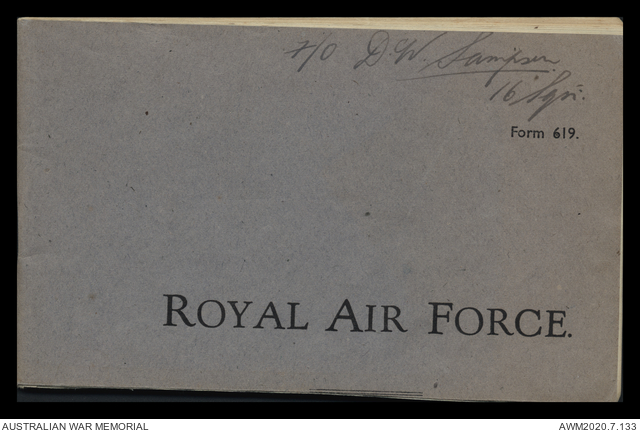
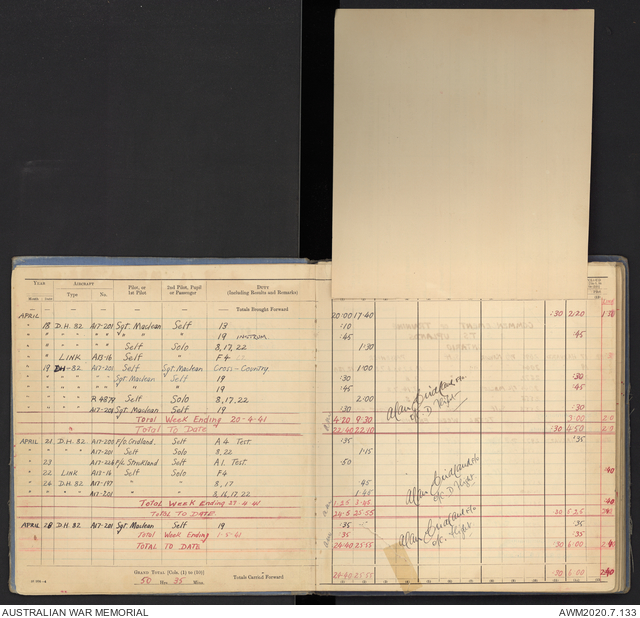


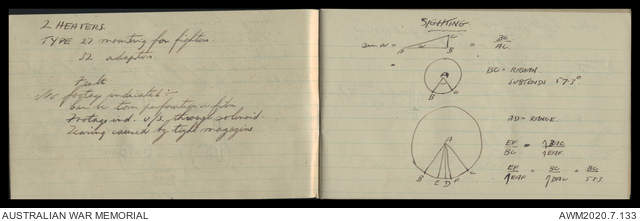





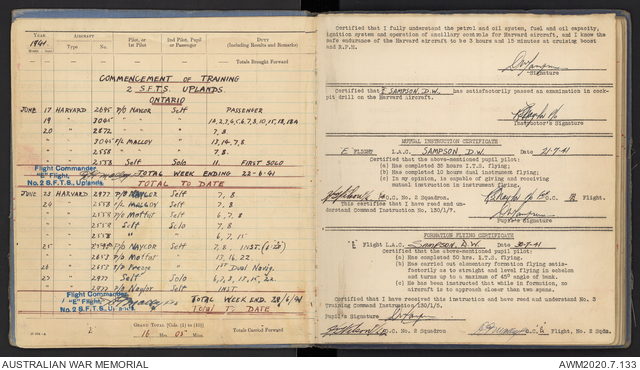

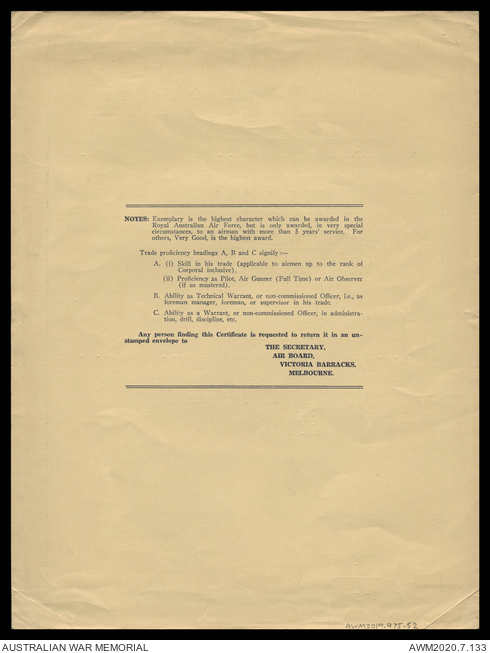











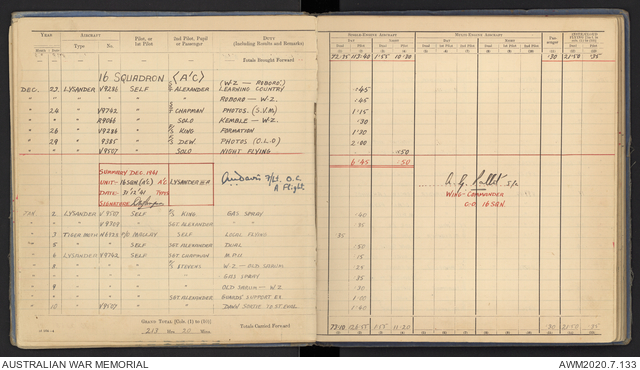



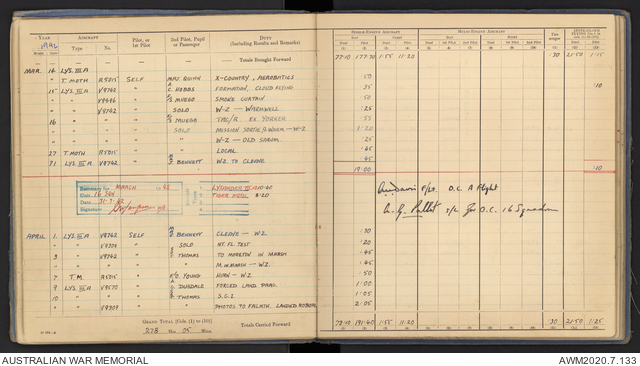











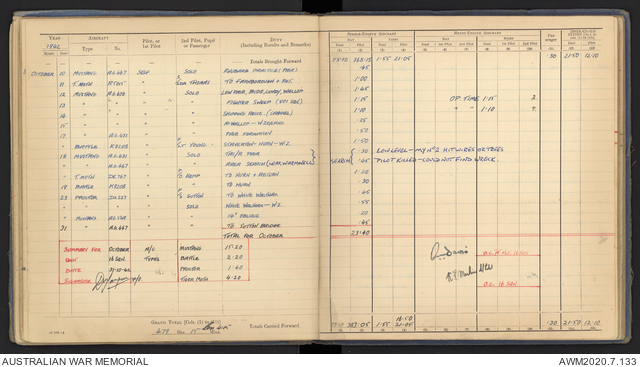










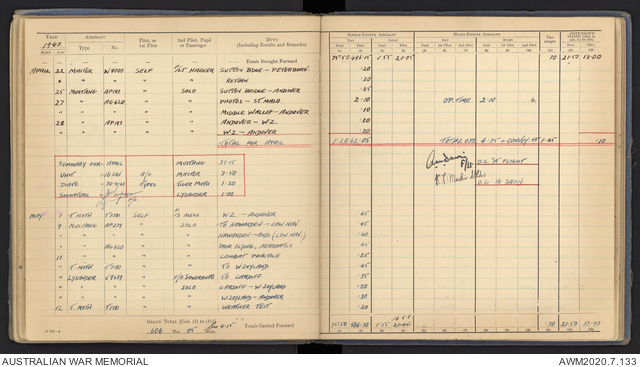





















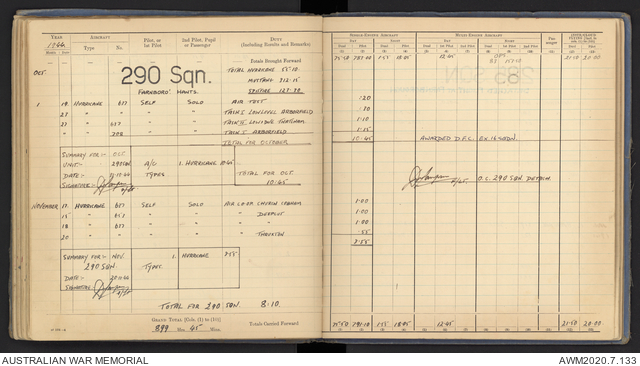

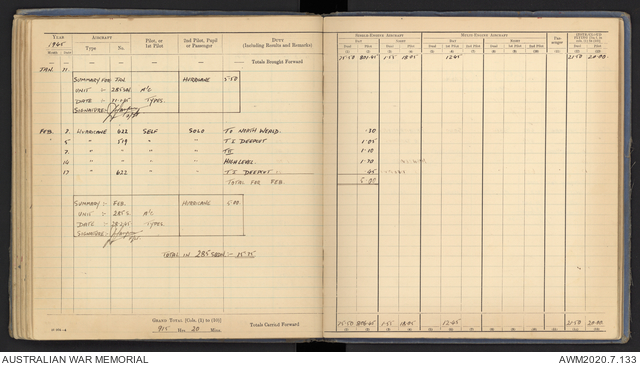

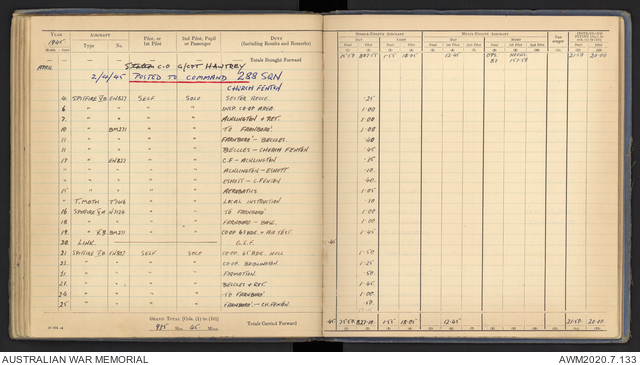












Collection relating to the Second World War service of 407744 Squadron Leader Douglas Wills Sampson DFC, No. 16 Squadron RAF, No. 290 Squadron RAF, No. 285 Squadron RAF, No. 650 Squadron RAF, No. 288 Squadron RAF, 1941-1946.
Wallet 1 of 2 - Wallet consists of Sampson's Certificate of Service and Discharge as an enlisted airman, the award certificate for Sampson's Distinguished Flying Cross, his Officer's Certificate of Service, a notebook with diagrams and calculations pertaining to aerial photography, and his flying logbook.
Sampson, a 25-year-old optometrist, enlisted in the Royal Australian Air Force (RAAF) in January 1941 and was accepted for pilot training. He was graded as an "above average" pilot at No. 9 Empire Flight Training School in Western Australia and completed advanced pilot training at No. 2 Service Flying Training School in Ontario, Canada, before he was commissioned a pilot officer and posted to No. 16 Squadron RAF at RAF Weston Zoyland in Somerset, England for operations from December 1941. The squadron was engaged in army cooperation duties, undertaking fighter sweeps and reconnaissance missions along the English coast and across the Channel.
Sampson flew reconnaissance photographing and film operations over France, the Netherlands and Belgium in the lead up to and on D-Day, the Allied invasion of Normany, on 6 June 1944, and was awarded the Distinguished Flying Cross (DFC) in October. He then flew with 1697 Air Delivery Letter Service (ADLS) Flight, transporting secret mail between London and France, from June to October 1944, briefly transferred to No. 290 Squadron RAF in October/November, before being posted to No. 285 Squadron RAF from November 1944. Sampson briefly served with No. 650 Squadron RAF in March 1945 prior to being appointed to command No. 288 Squadron RAF from April to June, relinquishing command after the war in Europe had come to an end. By his discharge in May 1946, Sampson had flown more than 991 hours.
Sampson's logbook records that he completed his first tour of operations in June 1943 and immediately embarked on a second tour with No. 16 Squadron RAF. He was leading a practice flight later that month when one of the following aircraft flew into Sampson's Mustang fighter. Sampson belly landed at 180 miles per hour; the crash bent the Mustang's .50 calibre machine guns and caused the ammunition to burst. Sampson returned to flying operations two days later.